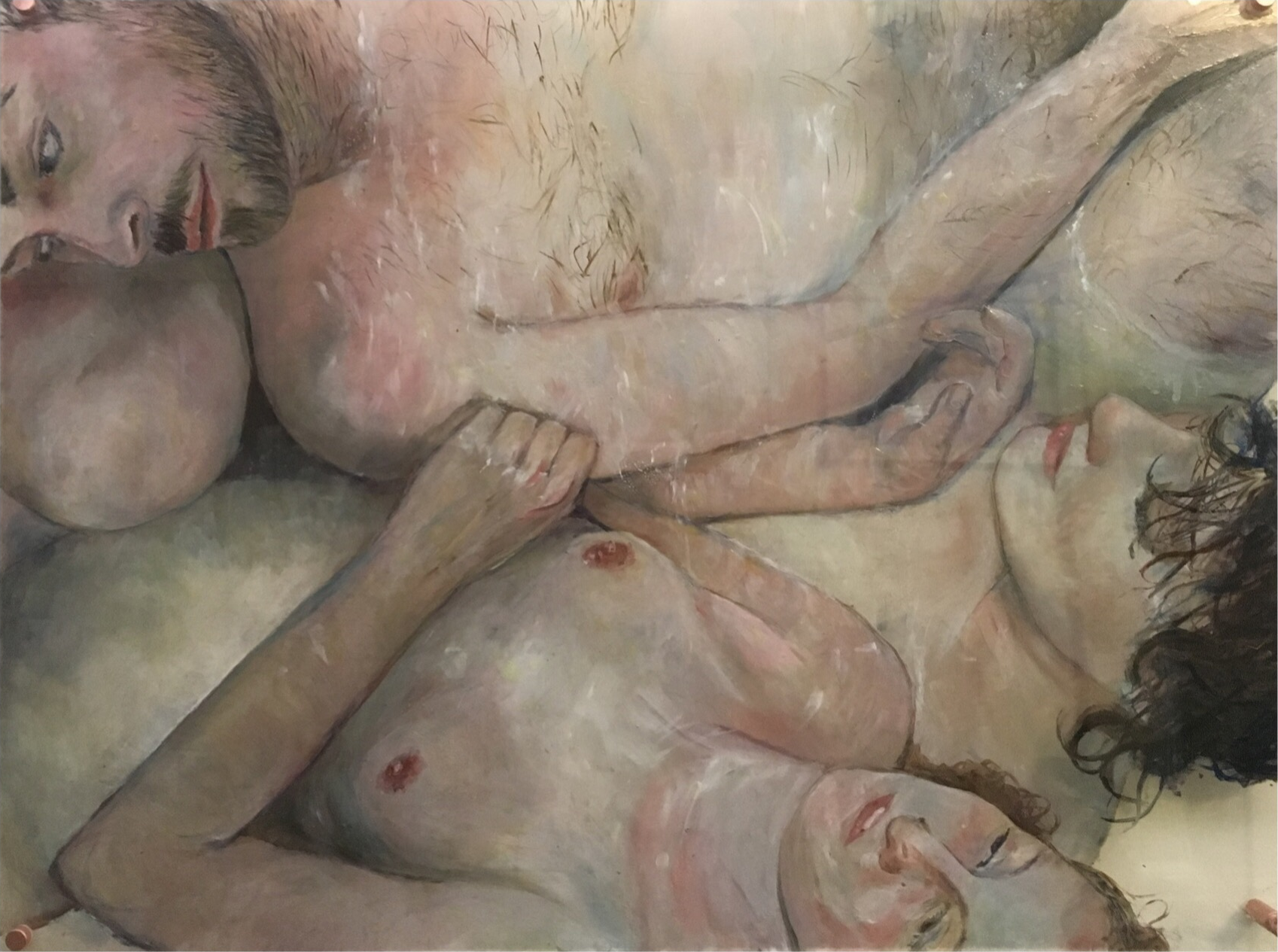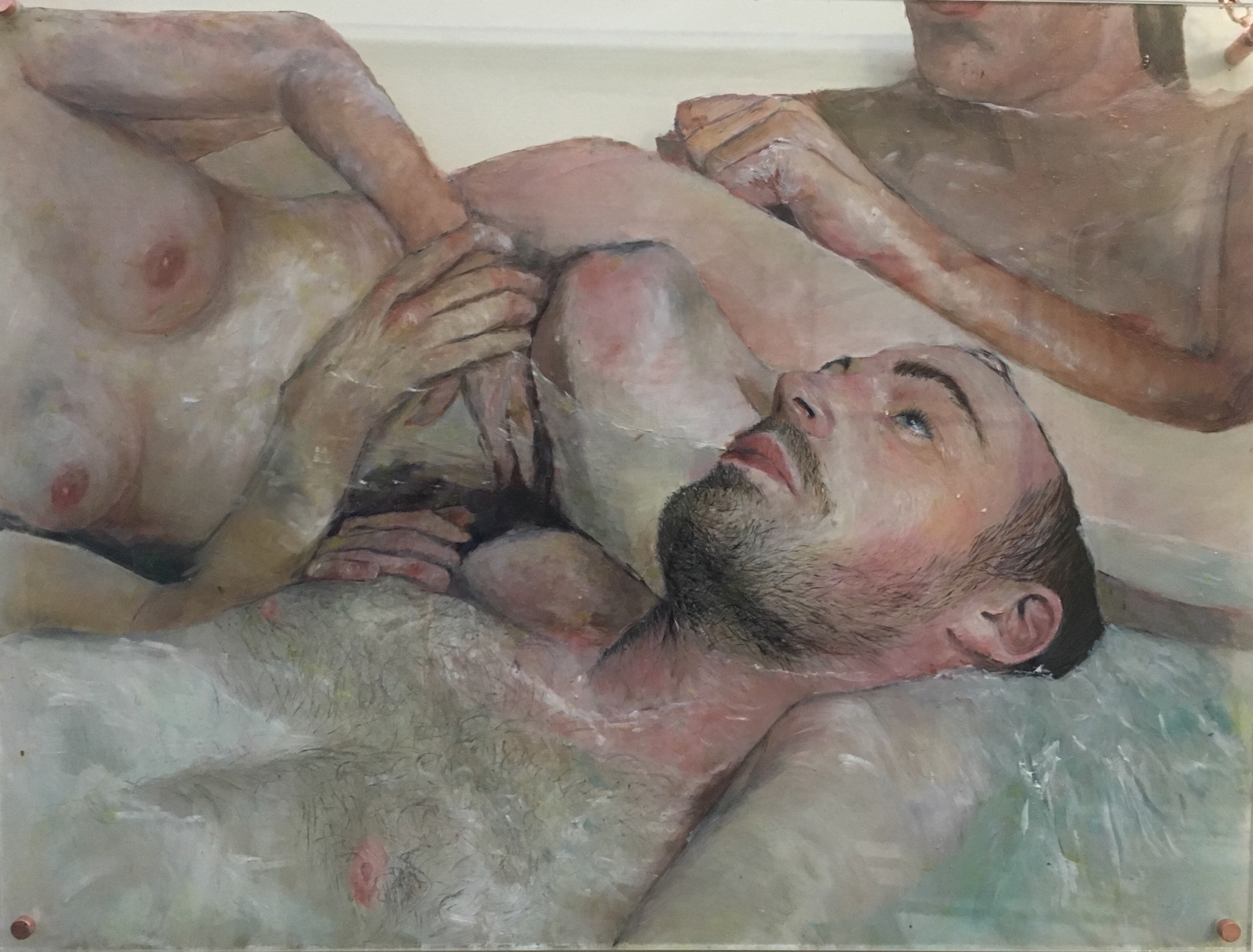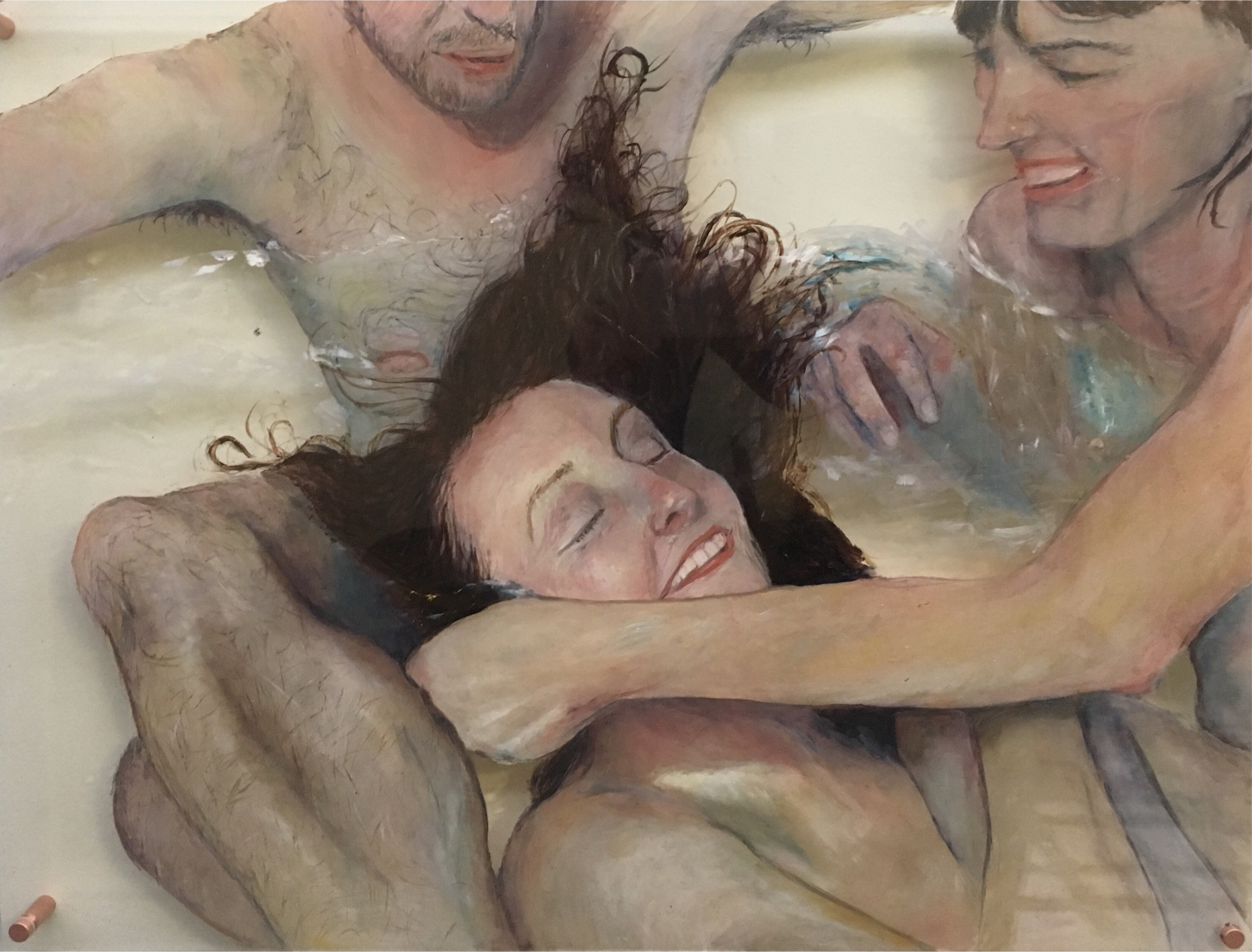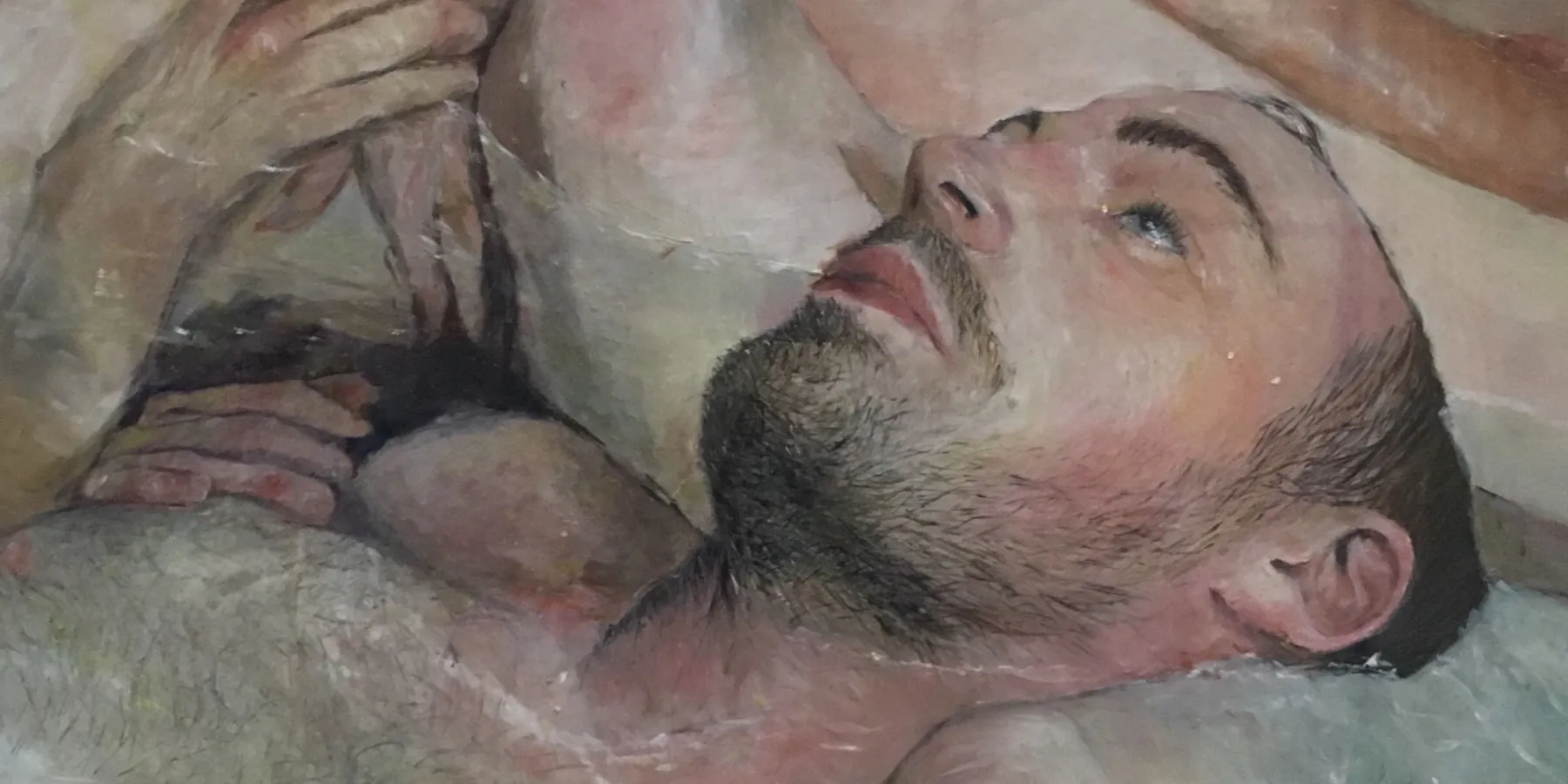Abstract
This series of 3 paintings of figures in a bath explores emotional responses of persons experiencing or responding to others’ moral distress. Intricately tied together and connected through time and space, the bodies represented suggest a complex web of relationships between clinicians and patients.
Figure 1. Containment 1

Figure 2. Containment 2

Figure 3. Containment 3

Media
Oil paint on clear Perspex®.
The first contributor (GM) commissioned the second contributor (ASF), an artist and art psychotherapist, to paint a series of works representing GM’s doctoral explorations of moral distress based on interviews with critical care nurses. The series of paintings was commissioned to visually augment the “encounters with experience”1 the nurses offered. The visuals provide a nontextual way to explore themes of balance, relationships, and responsibility that recurred in the interviews, which informed the nurses’ conceptions of moral distress.
In a bath, the figures balance one another and work together to avoid sinking. The figures represent clinicians, patients, and family members intimately connected in professional and personal relationships that exert various pulls of responsibility. Portrait form is used to help convey the figures’ vulnerability, most directly represented in their nakedness, paralleling the interviewees’ vulnerability in retelling their stories and navigating ethically complex experiences
References
- Ives J. “Encounters with experience”: empirical bioethics and the future. Health Care Anal. 2008;16(1):1-6.




